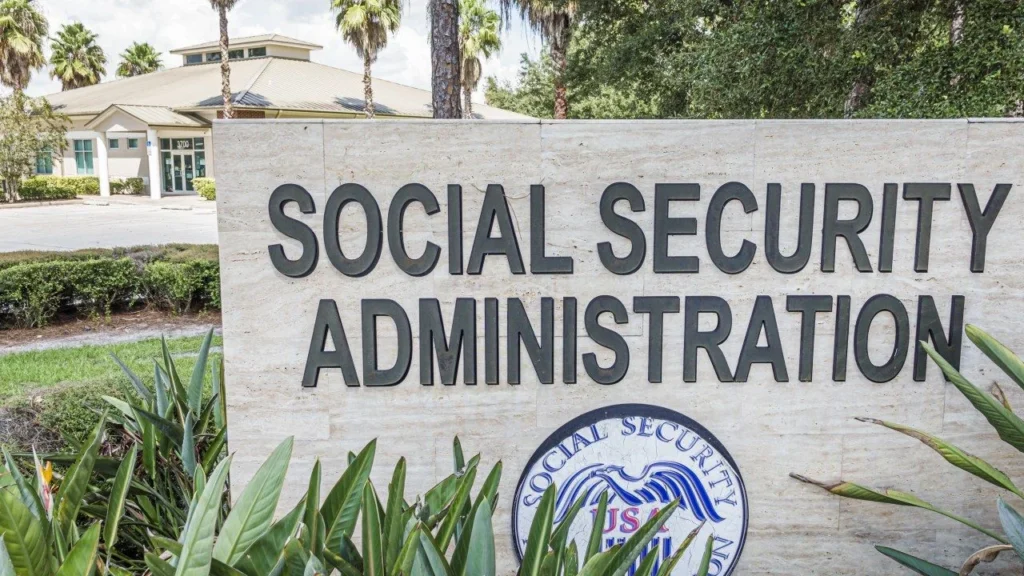Social Security Overpayments
The Social Security Administration (SSA) has announced the reinstatement of its policy to recover 100% of overpayments from beneficiaries, a practice that had previously been suspended due to widespread public criticism. This decision is expected to impact numerous Social Security recipients, many of whom may have been overpaid due to administrative errors rather than their own miscalculations. The reversal of this policy is projected to generate billions in recovered funds but has also led to serious concerns about financial hardships for vulnerable beneficiaries.
The Return of Full Overpayment Recovery
According to SSA’s latest statement, the default withholding rate for Social Security recipients will revert to 100% of a person’s monthly benefit. This move reverses last year’s decision, which had capped the withholding rate at 10% following public backlash. The SSA argues that this change is necessary to ensure the integrity of its financial operations and to maintain the long-term stability of the program.
While those with existing overpayments before March 27 will continue to be subject to the 10% cap, individuals who are overpaid after this date will automatically have their entire monthly benefit withheld until the debt is fully repaid. Notably, the 10% withholding rate remains unchanged for Supplemental Security Income (SSI) recipients. This distinction has led to further debates about fairness, particularly for retirees and disabled individuals who rely on Social Security as their primary source of income.
Why SSA Is Reinstituting the 100% Clawback
The SSA has justified this change by citing its legal obligation to recover improperly disbursed benefits. Acting Commissioner Lee Dudek emphasized that the agency must remain responsible stewards of public funds. The agency estimates that the revised policy will recover an additional $7 billion over the next decade. Given that SSA pays out approximately $1.6 trillion in benefits each year, this recovery effort is seen as a means to reduce financial losses and maintain the solvency of Social Security.
Despite these financial projections, the move has drawn criticism due to its potential to cause severe financial hardship. Many beneficiaries affected by these overpayments may have unknowingly received excess funds due to SSA miscalculations. A 2022 report by the agency’s inspector general revealed that tens of thousands of overpayments occurred due to a lack of effective controls over benefit calculations. This raises concerns about whether the SSA is prioritizing financial recovery over the well-being of its beneficiaries.
The Impact on Beneficiaries

The decision to reinstate the 100% clawback policy has sparked renewed concerns about the financial well-being of Social Security recipients. Reports indicate that some individuals received sudden demands for repayment totaling tens of thousands of dollars. If unable to repay immediately, these beneficiaries could see their entire monthly Social Security payments withheld, leaving them with no source of income. Given that many Social Security recipients are seniors on fixed incomes, this policy could lead to severe financial strain, making it difficult for them to afford necessities like rent, groceries, and medical care.
Advocacy groups, including the National Committee to Protect Social Security & Medicare, have voiced strong opposition to the policy change. A spokesperson for the organization criticized the decision, arguing that many overpayments stem from SSA’s own errors rather than intentional fraud by beneficiaries. In response, legal experts have urged those affected to explore repayment plans or file appeals to challenge these clawbacks. However, the appeals process can be complex and time-consuming, often leaving beneficiaries in a precarious financial situation while their cases are reviewed.
Workforce Cuts and Potential Service Delays
The timing of this policy shift coincides with ongoing staffing reductions and office closures at the SSA. Employees have warned that these changes could lead to longer wait times, reduced customer service, and increased processing delays. Some experts predict that as SSA staff numbers continue to decline, overpayment errors may become even more frequent, exacerbating the very issue the agency is trying to resolve. Affected individuals may find it increasingly difficult to contact SSA representatives for assistance, leading to prolonged financial uncertainty.
Additionally, critics argue that these cuts are part of a broader effort to reduce government spending at the expense of Social Security beneficiaries. The National Committee to Protect Social Security & Medicare has pointed out that field office closures force many recipients to travel long distances for in-person assistance, further complicating the resolution of overpayment disputes.
What This Means for Social Security Recipients
For those facing overpayment issues, the SSA does provide options such as appeals and repayment plans. However, navigating the appeals process can be complex, and delays in resolution could leave some beneficiaries struggling financially. Experts advise those affected to act quickly and seek guidance from legal professionals or advocacy organizations to better understand their rights.
The reinstatement of the 100% clawback policy marks a significant shift in Social Security overpayment recovery efforts. While the SSA aims to safeguard public funds, the decision raises serious concerns about the impact on vulnerable recipients who may have little recourse in cases of administrative errors. As advocacy groups continue to push for a more balanced approach, affected individuals are encouraged to stay informed about their rights and options for resolving overpayment disputes.
How Beneficiaries Can Respond
- Check Your Benefits Statements: Regularly reviewing your Social Security statements can help identify any discrepancies before they escalate into overpayment issues.
- File an Appeal if Necessary: If you receive an overpayment notice, you have the right to challenge it. Appeals can be complex, but seeking help from an attorney or advocacy group can improve your chances of a successful resolution.
- Request a Waiver: In cases where repaying the overpayment would cause financial hardship, beneficiaries may be eligible for a waiver, which could reduce or eliminate the repayment requirement.
- Set Up a Payment Plan: For those unable to pay the full amount immediately, the SSA does offer installment plans, allowing individuals to spread repayments over time.
As the SSA enforces this stricter repayment policy, staying informed and proactive is crucial. Beneficiaries facing financial hardship should explore all available options to mitigate the impact of overpayment recovery efforts.


